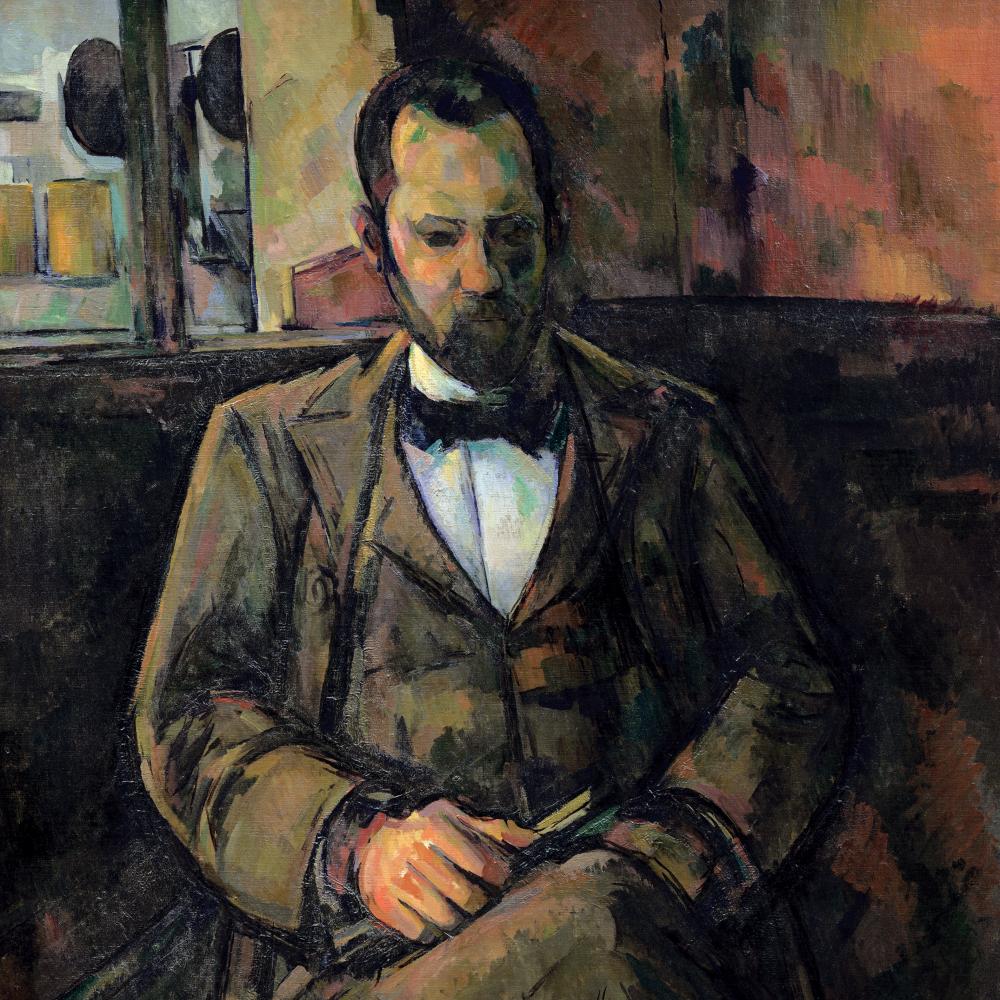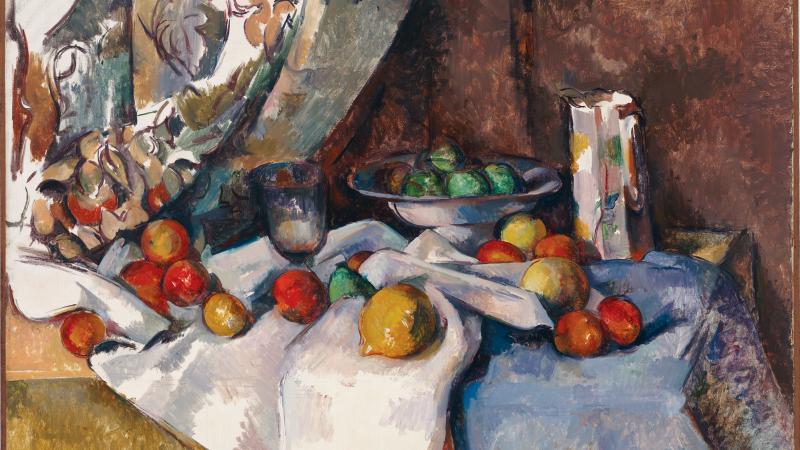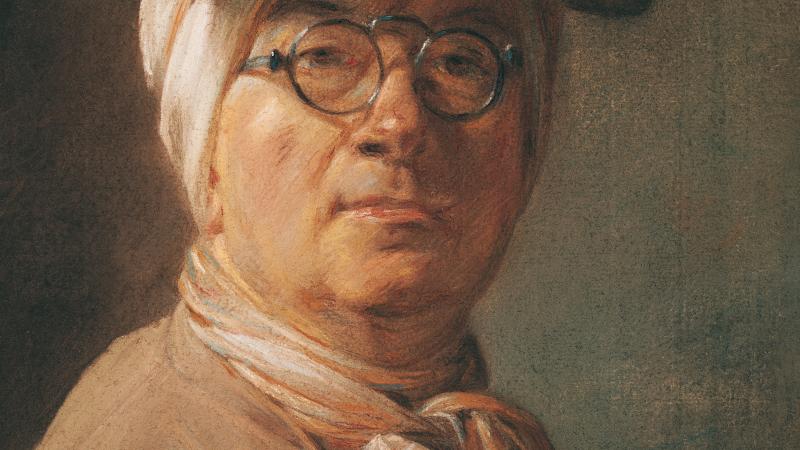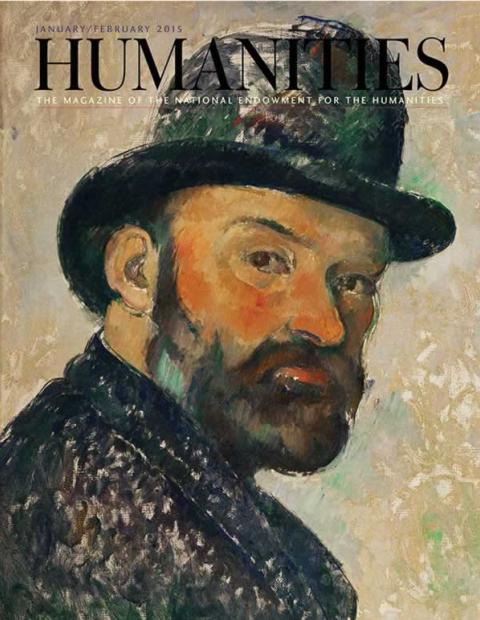Paris, 1899.
Imagine a visitor, from London say, strolling across the Pont des Arts to enter the Louvre. He is no stranger to Paris: A few years back, he saw the last Impressionist exhibition with Georges Seurat’s Sunday Afternoon on the Island of La Grande Jatte. He reads the art press and is familiar with the difficulty of modern art; he has even visited the gallery of Ambroise Vollard, where he has seen works by Édouard Manet, Pierre-Auguste Renoir, Edgar Degas, and Vincent van Gogh.
He walks into one of his favorite galleries in the Louvre and surveys the twenty-four paintings of Peter Paul Rubens’s Marie de’ Medici cycle. Perhaps he notices an upper-class Parisian woman and her female companion. Across the room, a couple of pupils from one of the art academies labor over their easels. They are making copies of Old Master paintings.
Our visitor then spies a man of about sixty in a rumpled jacket. Sporting a gray beard and a tattered beret, the man pays no heed to the chatter of visitors who walk past him. Pencil in hand, he is making a small sketch of Rubens’s Apotheosis of Henri IV. Is it too much to suggest that our visitor recognizes the artist, whose work he could have seen at Vollard’s gallery?
It is Paul Cézanne, master of landscapes such as that towering mountain—Mont Sainte-Victoire—all rendered in patches of color made of short, parallel brushstrokes. The visitor remembers the painter is some kind of Impressionist who painted outdoors. But why would an Impressionist be sketching a huge, seventeenth-century allegory by Rubens instead of painting en plein air?
Paul Cézanne was indeed known for his landscapes of Mont Sainte-Victoire, the mountain near his hometown of Aix-en-Provence, France. Cézanne exhibited a couple of times with the Impressionists in the 1870s, and he adopted many ideas about modern art from them. For one thing, painting in front of the motif was paramount: The artist set up an easel directly in view of his or her subject, whether a landscape, portrait, or still life. When an Impressionist painter got ready for a day’s work, that meant shouldering a rucksack of oil paint in tubes, a primed canvas, a portable easel, turpentine and linseed oil, brushes, rags, and usually a hat and sunshade.
By painting directly from nature, the Impressionists broke with the academic practice of painting historical subjects by looking to the art of the past. Cézanne was different. For him, painting in front of the motif did not preclude a genuine and ongoing study of the Old Masters. Cézanne felt a deep reverence for certain artists in the Louvre, and frequently turned to them for inspiration and guidance, even in his maturity.
In the middle of a long sitting for a portrait, Ambroise Vollard, who had become Cézanne’s dealer, inquired about two unfinished spots on the hand. But Cézanne refused to be rushed. He said he needed to return to the museum for more study.
“If the copy I’m making at the Louvre turns out well,” Cézanne replied, “perhaps I will be able tomorrow to find the exact tone to cover up those spots. Don’t you see, Monsieur Vollard, that if I put something there by guesswork, I might have to paint the whole canvas over starting from that point?”
One cannot imagine a sixty-year-old Monet running back to the Louvre to look at one of the Old Masters in order to finish one of his paintings, but for Cézanne, this was standard practice. Yet the blank spots on Vollard’s hand remain to this day.
Cézanne stands alone among his Impressionist and Post-Impressionist peers for his deep respect for the art of the past. Early paintings by Manet referred provocatively to well-known Renaissance paintings; in a famous example, his Olympia of 1863 replaced the nude goddess in Titian’s Venus of Urbino with a contemporary Parisian prostitute. As Manet approached mid-career, however, he concentrated on modern urban subjects and no longer engaged in cheeky reworkings of great paintings from the museums of Florence and Venice. Impressionists like Claude Monet and Auguste Renoir focused on modern landscape and figurative subjects from the beginnings of their careers. Although Edgar Degas collected Old Master paintings and drawings, he too concentrated on modern subjects, especially the racetrack and the ballet, once he began to exhibit with the Impressionists. Decades after the first Impressionist exhibition, however, when even a young Pablo Picasso was no longer doing “student” work, Cézanne was still going to the Louvre and consulting the Old Masters.
Artists competing for the Prix de Rome and for other academic accolades continued to paint historical and mythological subjects, but the art we now call “modernist” featured a more sketch-like style due to the Impressionists’ interest in painting on the spot, directly from nature. After the Post-Impressionists, Fauvists, Cubists, and other modernist artists began to build on the Impressionist foundation for modern art, the idea of originality took precedence over reverence for the past. Modernist artists were supposed to make a break with the past as they strove to create something entirely new. Cézanne’s art was pivotal for the development of modernist movements such as Fauvism and Cubism, yet Cézanne went on studying the art of the past even while he painted from nature.
In 1870, the Louvre displayed a recent bequest of over five hundred paintings given to the museum by the physician Louis La Caze (1798–1869). Among these canvases were works by great Italian masters such as Veronese and Tintoretto. Perhaps the most lasting contribution to the Louvre, however, came via the richness of the doctor’s holdings in seventeenth-century Dutch art, and, even more, in eighteenth-century French art. Paintings such as Rembrandt’s Bathsheba at Her Bath, Fragonard’s The Bathers, and Watteau’s Gilles entered the largest museum in the art capital of Europe. Cézanne fled Paris during the Franco-Prussian War in 1870, but when he returned, he began to copy Rembrandt’s Bathsheba.
The still-life paintings by the eighteenth-century French painter Jean-Baptiste-Siméon Chardin in the La Caze collection would remain a touchstone for Cézanne for the rest of his career. Some very fine Chardins entered the Louvre with the La Caze bequest, including Grapes and Pomegranates of 1763. The work is typical of Chardin’s late still-life paintings with its fruit and crockery on a ledge, seen in low light. Chardin pairs a cut pomegranate with one that is uncut, purple grapes with green, a goblet of wine that is mostly full with one that is mostly empty. Two small apples and a pear sit astride a knife that projects forward from the stone ledge, and the fruit is arranged in front of a faience water pitcher.
At first glance, the naturalistic painting would seem to have little in common with the bright, unfinished still life by Cézanne now in the Museum of Modern Art, New York. A decorated porcelain pitcher and empty wine glass recall Chardin’s painting, but here these objects stand amidst a tumble of fruit over a rumpled tablecloth, with a printed curtain drawn back behind.
Cézanne’s sense of reconstructing the object world he perceives can best be described as relational. The pitcher leans slightly toward the fruit bowl, the central lemon tips toward the viewer, the grapefruit at right sits in front of a trio of fruit but behind two apples. The table’s corner juts out past the pitcher but the whole back edge of the table disappears behind the fruit bowl. One fruit’s spatial relationship with the one next to it makes perfect sense, but one side of the table does not seem to line up with the other.
In addition, Cézanne favors multiple outlines for some objects, and no outlines at all for others. Slender lines of red trace the protuberance on the central lemon, before the lines peter out and allow a penciled outline to show through. On the apple at far right, an orange-red segment of a circle lies just above the fruit itself. It breaks off into more blue shadow, blue-gray tablecloth, and dark blue contour; the red patch seems to sit on top of the apple rather than being part of the apple.
Likewise, on the grapefruit behind it, contours at left and right do not meet, and a yellow strip flows out between two open contours as if entering or exiting a maze. One could point to numerous instances of Cézanne’s drawing not containing his painting: The wine glass has only part of a contour on the far edge where it meets the curtain; contour lines dance across the top of the pitcher and into the space beyond; the left and right sides of the fruit bowl could never meet.
The disjointedness in the drawing, the spatial ambiguities, the patches of color that migrate from apple to tablecloth—these aspects of Cézanne’s working method are always hailed as modernist innovations. Cézanne calls attention to the painted surface; he works to reconcile an illusion of a three-dimensional object world within the confines of the two-dimensional art of painting. Clement Greenberg declared these aesthetic choices to be modernist ones. Picasso and Braque’s austere Cubist paintings in the early twentieth century would later explore the spatial disjunctions suggested in Cézanne’s work.
Yet Cézanne could have seen some of these features, or at least hints of them, in Chardin’s painting. Chardin was a master at suggesting the translucency of the grapes through the irregular dabs of white light off-center, and the comma of yellow-green hugging the right sides of the green grapes. Look in particular at the lone green grape that has rolled out in front of the cut pomegranate at left. Not only do we see a yellow curve of light on the grape’s right side, but also, there is a short yellow line directly under the grape. Seemingly the same color as the grape and joined to it, this yellow-green dab is a tiny pool of refracted light on the table edge. On top of the grape, there is a gray-green kidney shape. This form almost bulges as it exceeds the boundaries of the grape itself. The kidney form is there to suggest the grape’s convexity as the light passes through it. For Chardin, optical truth demands that the grape not be perfectly round, but instead a bit distorted by our perception of the light passing through it and bouncing off, which he represents with dabs of paint that do not conform to the perfect circle of the imagined contour.
A grape we know to be round does not actually look round with light splashing over it and bulging forward, or with shadow encompassing it and flattening its bottom edge. An Anjou pear we know to be green reflects a patch of red from the neighboring apple. The red wine appears in the bowl of the glass, and in the stem of the goblet that reflects it. Chardin not only represents light and shadow on objects; he also records the reflections of color emanating from the neighboring objects. In other words, Chardin paints the optical effects of spatial relationships that create idiosyncrasies and variations in the distribution of colors, and even in the drawing.
The unexpected and halting passages of Cézanne’s still life make more sense when seen next to Chardin. If a curve of red sits atop one of Cézanne’s apples, that shape resembles the swirl of paint atop one of Chardin’s grapes. Modern viewers can more easily see the subtle unevenness of Chardin’s table edge as a result of seeing Cézanne’s sloping tables.
Chardin’s work experienced a revival in the middle of the nineteenth century in France. In an era of naturalism, the simplicity of his subjects and the humility of his approach struck a chord. Cézanne was part of this Chardin renaissance. Even as a mature artist, he continued to rethink his own artistic decisions in light of passages of painting by masters such as Chardin. Cézanne’s evident struggles with an optical truth, in painting what was in front of him, have come to stand for his modernism. His subtle homage to Chardin, however, reminds us that at the least this modernist painter did not reject the Old Masters, but wrestled with his predecessors on the way to transforming them.
Harold Bloom has written about the “anxiety of influence” in literature. Reading a poem by Coleridge, for instance, Bloom detects traces of the poet’s struggle with great precedents in the work of Shakespeare. For Bloom, the most important readings or acts of homage to the art of the past actually become in their way misreadings; by absorbing the earlier work, the artist reinvents it. Bloom quotes Jorge Luis Borges to the effect that “artists create their precursors”: We see the earlier work differently as a result of the later work, and this is as true of Cézanne and Chardin as it is of Picasso and Cézanne. Optical instabilities are delicately complex in Chardin’s painting; in Cézanne’s painting, they loom large. Yet even as Cézanne magnified the subtle perceptual difficulties in Chardin’s work, he went on consulting Chardin and other masters. At the turn of the twentieth century, a mature artist who was already attracting a pilgrimage of young painters who traveled to Aix to seek him out—that aging artist nevertheless continued to humble himself before the masters in the Louvre. No doubt Cézanne exaggerated Chardin’s distortions. His “fabrications” of Chardin and other masters, however, became the foundation on which Picasso, Matisse, and so many others forged an art we see as making a radical break with the past.
In 1904, when Cézanne was sixty-five, he wrote a letter to his painter friend Émile Bernard. “Do you remember the beautiful pastel by Chardin, equipped with a pair of spectacles with a visor shading his eyes?” he asked, recalling the pastel self-portrait in the Louvre. “He’s a crafty one, that painter. Have you noticed how, by allowing a plane of light to cross his nose at a slight angle, the values adapt much better to the eye? Take a close look and tell me if I’m not right.”
Chardin’s Self-Portrait Wearing an Eyeshade was completed just four years before the artist’s death. Cézanne, who was complaining of “brain trouble” as a result of his own advancing age, was still worrying about getting the planes of light just right. Even in memory, he was returning to the Louvre.




